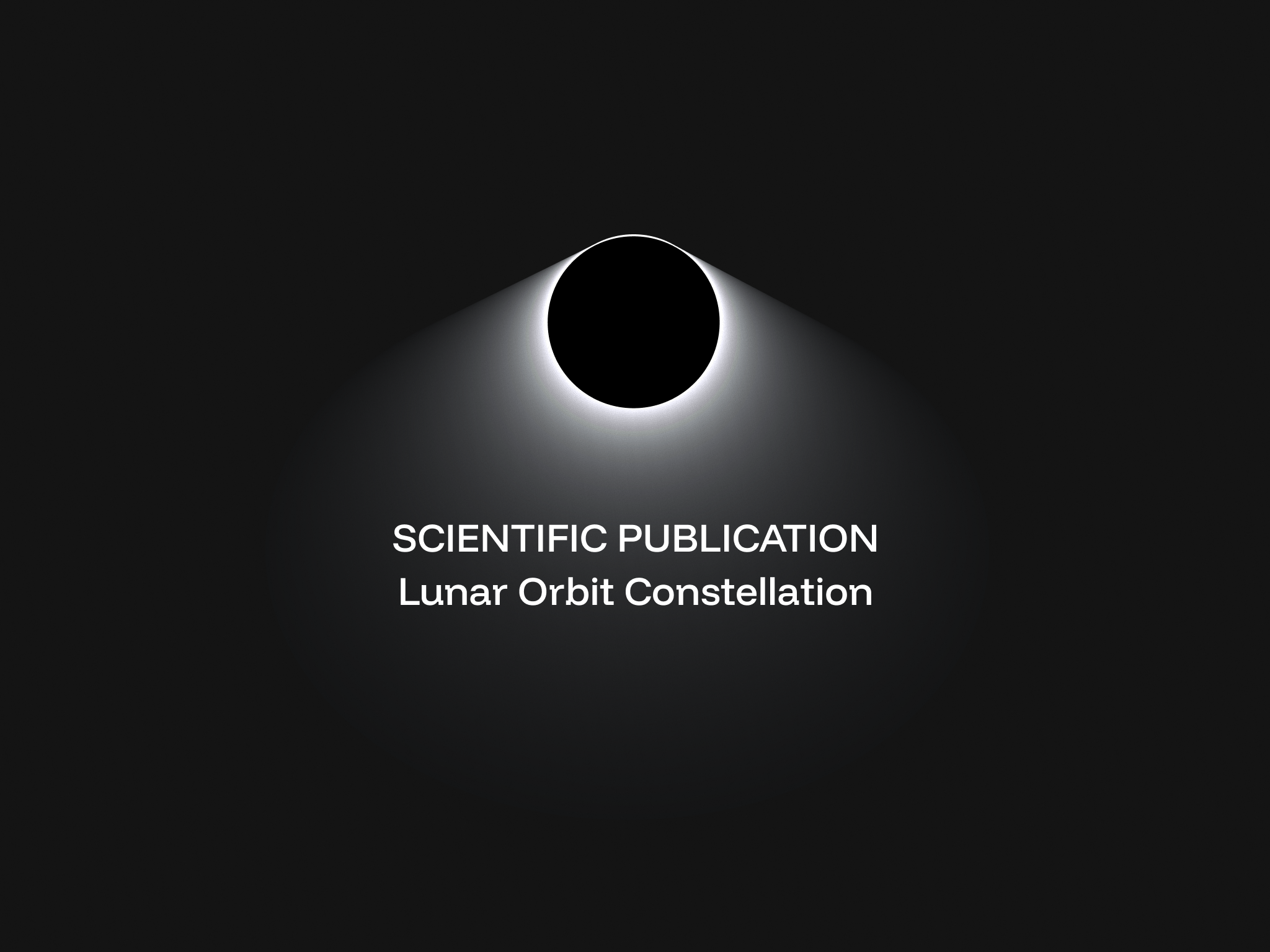A Lunar-Orbiting Satellite Constellation for Wireless Energy Supply

Paper pubblicato sul journal MDPI
https://www.mdpi.com/2226-4310/10/11/919
Introduction
The growing interest in lunar exploration and the development of permanent infrastructure on the Moon calls for reliable energy supply solutions, especially during the long lunar nights. The paper “A Lunar-Orbiting Satellite Constellation for Wireless Energy Supply”, published in Aerospace by Lopez et al., presents an innovative approach: a constellation of lunar-orbiting satellites capable of wirelessly transmitting energy via laser to photovoltaic receivers on the surface.
This solution could offer a viable alternative to traditional solar and battery-based technologies, whose limitations become apparent in the extreme and prolonged darkness of the lunar environment.
Paper Overview
The context and the challenge
The Moon's day-night cycle lasts approximately 29 Earth days, making continuous energy operations particularly challenging. Current solutions such as rechargeable batteries and static solar arrays are insufficient to ensure energy continuity. Lopez et al. propose a constellation-based system that collects solar energy in orbit and transmits it to designated surface locations, reducing dependence on surface-based energy storage.
The proposed system
The authors explore multiple orbital configurations to optimize energy transmission: low-altitude polar circular orbits, frozen elliptical orbits, and Distant Retrograde Orbits (DRO). Power transmission is achieved via 1064 nm laser beams directed toward high-efficiency photovoltaic receivers on the surface.
Through numerical simulations, they modelled scenarios using constellations of 3 and 10 satellites. The findings show that:
- A 3-satellite constellation can deliver an average of 5–11 kW, equating to approximately 136 kWh per day.
- A 10-satellite constellation can reach up to 40 kW, producing around 454–519 kWh per day.
These values are promising for supporting robotic activity, scientific experiments, and small-scale habitation units at lunar poles or other poorly illuminated areas.
Technological challenges
Wireless power transmission on the Moon requires high levels of precision and reliability. Key technical challenges include:
- The overall efficiency of high-power lasers (currently around 50–60%)
- Precise beam pointing capability, down to sub-arcsecond resolution
- Advanced thermal management systems to dissipate heat both onboard the satellites and at surface receivers
The authors also emphasize the need for robust technologies capable of operating in highly dynamic environments, exposed to dust, temperature extremes, and radiation.
Future implications
This proposal paves the way for remotely distributed energy supply points, strategically located across the lunar surface. It marks a significant step toward building permanent habitats, research stations, and resource extraction facilities in areas otherwise inaccessible with conventional solar power systems.
Conclusion and further reading
The work by Lopez et al. is a significant contribution to the ongoing discussion on the future of lunar energy infrastructure. Wireless transmission via orbital constellations introduces a flexible and scalable paradigm with applications that extend far beyond current robotic missions.
To explore the technical details, simulations, and future perspectives of the proposed system, you can read the full paper available at Aerospace via the following link:
LOREM IPSUM"
The safest tools for the digital world.
Lorem ipsum dolor sit amet, consectetur adipiscing elit, sed






















